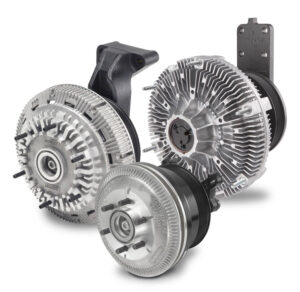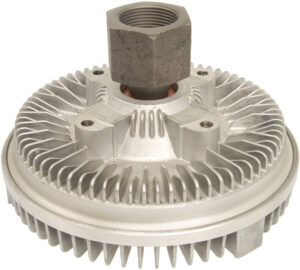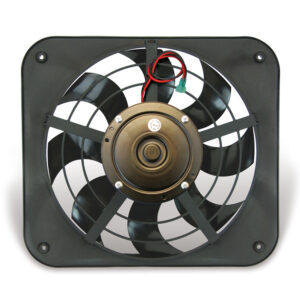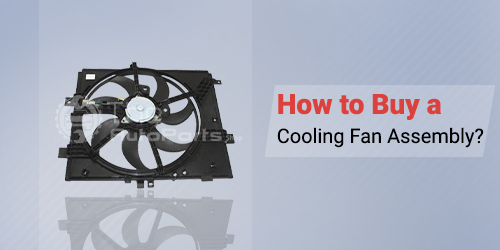Park your car on a hot summer day and when you come back, sitting on the seats becomes a hassle. It is impossible to drive a vehicle in such a condition. No matter how hot the temperature is; a cooling fan helps keep the vehicle cool. However, they undergo wear and tear over time, and cooling fan assembly replacement would resume its normal functioning. This article covers everything related to cooling fans and simplifies the process of buying a cooling fan.
What Is The Role Of A Cooling Fan In The Car?
The temperature of the coolant is reduced with the help of a cooling fan. The coolant intakes heat from the engine and moves towards the radiator. As it moves through the radiant tubes, the cooling fan blows air via a radiator that eliminates heat from the coolant. The coolant then moves towards the engine, and the entire cycle starts again. The temperature of the engine follows this basic process and prevents the engine from overheating.
Categories of Cooling Fans
Over the years, there have been many changes in the working of the cooling fans. Therefore, it is vital to determine the type before getting the cooling fan assembly replaced.
Engine Driven Cooling Fans

Manual cooling fans are the oldest option of engine-driven cooling fans. They work on a pulley belt mechanism and are driven by the crankshaft. As the engine moves, manual cooling starts taking place. Years later, the clutch mechanism was an integral component of engine-driven fans. Non-thermal clutch systems come with cooling fans connecting with water pumps via the clutch. The clutch is involved or removed from the process based on the speed of the engine.
Thermal Clutch Fans

Thermal clutch fans come with a bi-mechanical spring that works like a thermostat. The spring contains a valve that regulates the flow of coolant from the reservoir. As the engine temperature surges, the valve opens, and fluid starts engaging the clutch. On the contrary, the fluid moves back to the reservoir and detaches itself from the clutch when it drops.
Flex Fans

Flex fans are engine-operated devices with thin blades and aluminum alloys in them. These fans have been incorporated in high-performance racing vehicles and produce less noise and vibrations compared to the standard fans.
Electric Cooling Fans

Electric cooling fans derive power from the electrical systems, are regulated by thermal sensors, and have a small size compared to the engine-driven type. You will find electric coolers at the front and back of the radiators. The front ones are termed as pusher ones, while at the back are puller fans. Puller fans lie between the radiator and engine, while the pusher ones are installed in vehicles that don’t have adequate space.
Ways to Determine a Bad Cooling Fan
Vehicle Overheating
A fan keeps the coolant at optimum temperature—issues with the fan increase the temperature of the engine. The fan should turn on as the engine’s temperature starts rising, but it isn’t. Drivers are unaware of the overheating problems generally detected by the dashboard. At this point, it is vital to shut down the car and wait for it to get back to normal. A problematic radiator isn’t just making the engine hotter but also the cabin of the car. The possible reason could be issues with the radiator fan.
Whirring Noises
It would help if you didn’t take strange noises produced by the vehicle lightly. As the radiator starts cooling, the fan motor starts failing, leading to a whirring or loud clicking sounds. Damaged fan blades start touching other vehicle components. If you hear these noises,even if the fan is working,fixing the issue would be the best course of action.
AC Not Performing Well
As the radiator stops working, you might notice issues with the air conditioning system. The radiator fan is expected to draw air from the condenser and emit heat from the refrigerant. The amount of air released by it is double compared to the condenser fan.
What is the Cost of Replacing a Cooling Fan?
The average cooling fan assembly replacement cost lies between $550 to $650.The cost of the fan lies between $400-$450, and the labor costs are $150 to $200.However, in certain vehicles, it is more expensive based on the design. In many cars, you will find the fan at the top of the radiator. You can change the radiator on your own and save labor costs. Try not to drive with a problematic fan as it would severely damage the motor, and future repairs would burn a hole in your pocket.
How to Buy a Cooling Fan?
Every auto part is designated an OEM number. Know the OEM number to get the desired part. Share your VIN number with the dealer to know the OEM number of your vehicle. You can also find it using the make, year, and model of the vehicle. Associate with the dealers that offer the best quality and inexpensive car parts, such as ‘The Auto Parts Shop.’We deliver the widest range of auto parts at your doorstep.
Wrapping Up
Stabilize the temperature of your vehicle by getting optimum quality and cost-effective cooling fans for the vehicle.
